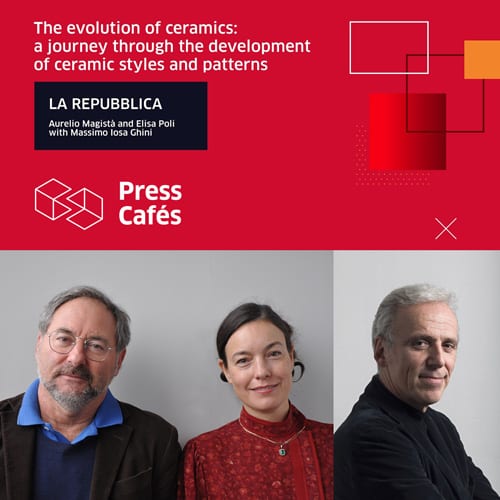Products Trends


The splendid motifs of ceramics | by Elisa Poli
 Cersaie Press Café: LA REPUBBLICA
Cersaie Press Café: LA REPUBBLICA
Aurelio Magistà and Elisa Poli talk to Massimo Iosa Ghini
In a conversation with Bolognese architect and designer Massimo Iosa Ghini, we discussed the common thread running through more than a century of ceramic production. In particular, we focused on the tendency in the world of ceramics to create new materials that evoke the aesthetics of the past, the “splendid motifs” of yesteryear. “This characteristic is bound up with our idea that everything that is historical, everything that has survived the process of selection carried out by history, has endured precisely because of its positive qualities,” explains Iosa Ghini. This process of remembering and preserving also applies to the rediscovery of graphic skills, such as those of the international Arts and Crafts movement. Nineteenth-century artists such as William Morris and John Ruskin continue to influence us today through their idea of integrating natural elements into industrialisation.
In Italy, too, we have seen examples of perfect integration of the natural and the industrial in the Liberty style, the Italian version of Art Nouveau. Reproduction of nature has been a very popular subject for centuries, perhaps since the dawn of mankind. The process is certainly still in progress and fulfils a very contemporary need. “Today we all feel the need to maintain our quality of life while staying in touch with nature. This is expressed through visual motifs and tactile effects (embossed, silky, veined, etc.) typical of the plant and animal world. These elements are combined in ever new ways as part of a trend driven by the endless technical potential for creating textures and surfaces inspired by a natural world that we consider to be friendly.”
Today we also have a strong capacity to restore and preserve authentic period pieces, which are given a new lease of life when placed in the right context. However the idea of restoration, particularly in the ceramic sector, is also linked to another trend, that of the vintage effect.
This is an aesthetic that we have inherited from the world of fashion. And this brings us back to the connection between quality and durability. Durability is one of the most essential characteristics of ceramic, essentially its “superpower”. Ceramic materials have a very long lifespan, potentially lasting for centuries, and are maintenance-free and highly sustainable.
View the complete programme of Cersaie’s Press Cafés.
February 2021



